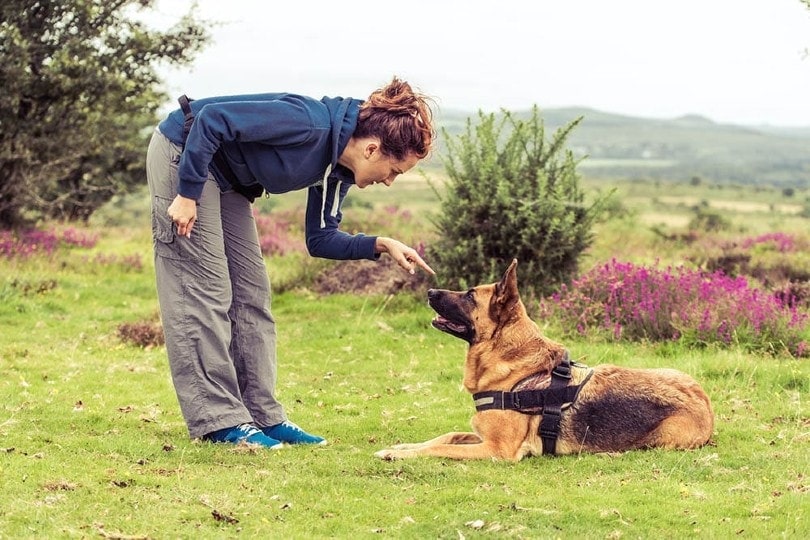How to Train a Mastiff: 12 Expert Tips
By Adam Mann
Updated on

The Mastiff is a very large dog, and because of this, you really can’t deal with unruly behavior. But how can you train your Mastiff to get the results you want? Well, there are a few tips you can follow to train even the most stubborn Mastiffs. So, keep reading and we’ll walk you through everything you need to know to train your Mastiff successfully!
The 12 Tips on Training Your Mastiff
1. Stay Patient
Rome wasn’t built in a day, and your Mastiff will not master everything that quickly either. Mastiffs are an intelligent breed, but they can also be a bit stubborn and they’re going to test your patience. But don’t give in and keep coming back for new training sessions and you’ll have them mastering their obedience training and learning all sorts of tricks in no time!
2. Use Positive Reinforcement
When it comes to training a Mastiff, positive reinforcement is critical. They want to make you happy, they’re just not sure how to do it yet. But by rewarding positive behavior, they’re more likely to repeat those behaviors in the future.
However, if you use negative reinforcement, they’re more likely to hide those behaviors in the future. You want your Mastiff to look forward to their training sessions, and the only way to do that is with positive reinforcement.
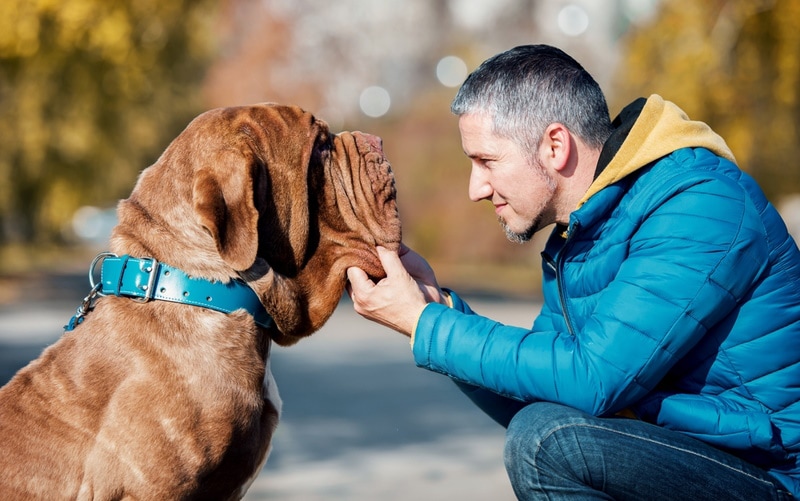
3. Use Treats
Praising your Mastiff is great, but if you really want to get their attention and have them trying their best, you need to up the ante with some treats. Find treats they love and then only give them those specific treats during your training sessions. This will give them something to really work for, and it helps ensure you have them trying their best during every session.
4. Start Young
While we don’t buy into the saying that you can’t teach an old dog new tricks, we fully acknowledge that it’s a lot harder to teach an older dog new tricks. The sooner you can start their training, the better, although we do recommend waiting until they’re at least 6 weeks old. But if you start at this age and then continue throughout their life, there’s no reason you can’t teach your Mastiff all sorts of new commands.

5. Stay Consistent
When it comes to training any dog, consistency is crucial, and the Mastiff is no exception. We recommend at least one training session each day, although there’s nothing wrong with having two training sessions a day.
If you can try to have the training session at the same time each day and have a dedicated area for it so they know when and what to expect.
6. Make It Fun
If you’re not having fun your dog won’t either! Find a way to enjoy the experience and try to ensure your Mastiff has some fun too. Of course, if you’re having fun, your pup should be able to pick up on that energy, and that means they’ll be having a great time as well.
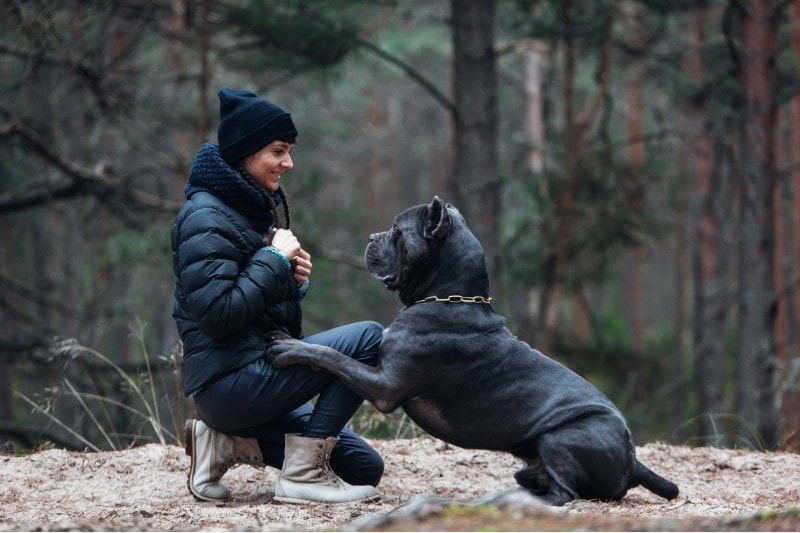
7. Keep Sessions Short
Dogs have short attention spans, and if you’re trying to sign them up for long training sessions, you’re only going to have a frustrated and bored pet. But if you keep the training sessions between 15 and 20 minutes long, it’s the perfect amount of time to get all of your dog’s attention throughout the entire session.
8. End on a Positive Note
Once you and your Mastiff have mastered a beginning technique, that’s a great way to end your training sessions. This lets both you and your Mastiff end the session on a positive note, making it more likely that they’ll want to come back for the next one.
If you’re ending every training session because you and your pup are frustrated, that’s not going to be a very enjoyable experience for either one of you.
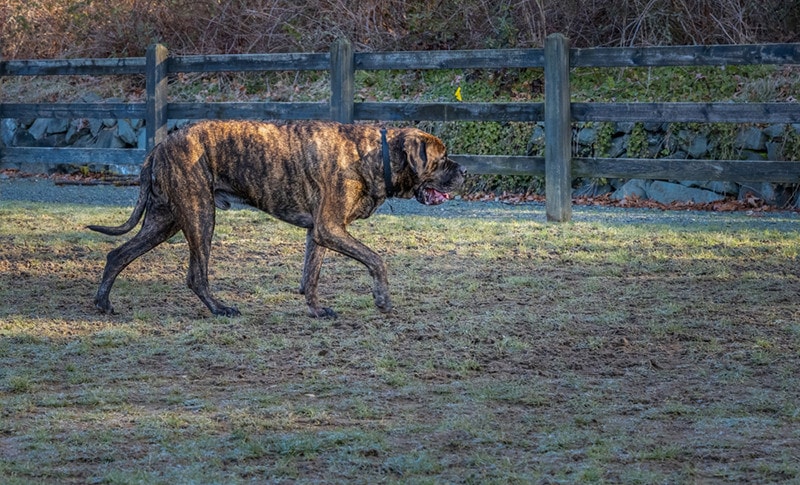
9. Start Simple
You can’t teach your Mastiff all the most complicated tricks right away, and you must start with the simple tricks. Start by teaching them their name and then move on to something like sitting down.
We know that you’re excited to teach them all sorts of complicated and cool tricks, but until they master the basics, they’re not ready for it.
10. Use Your Hands
While we like to pretend that dogs understand everything we’re saying, the truth is that they don’t understand most of what we say. So, when you’re trying to teach them something new, you can help them out by adding hand motions.
It’s another clue your dog can use to learn something, and the easier you make it for your pet, the more successful you’ll both be.

11. Minimize Distractions
Your dog has the attention span of a toddler, and if you’ve spent any time around toddlers, you know just how challenging it can be to keep their attention on something. Because of this, when you’re training your dog, you need to do your best to eliminate any and all distractions.
Find a quiet area where your dog doesn’t have anything to focus on but you, and the training sessions should go a lot smoother.
12. Get Help
There’s nothing wrong with getting a little professional help if your training sessions just aren’t doing the trick. While you won’t want to solely depend on professional services, they can often give you the leg up you need to get your dog’s behavior under control.
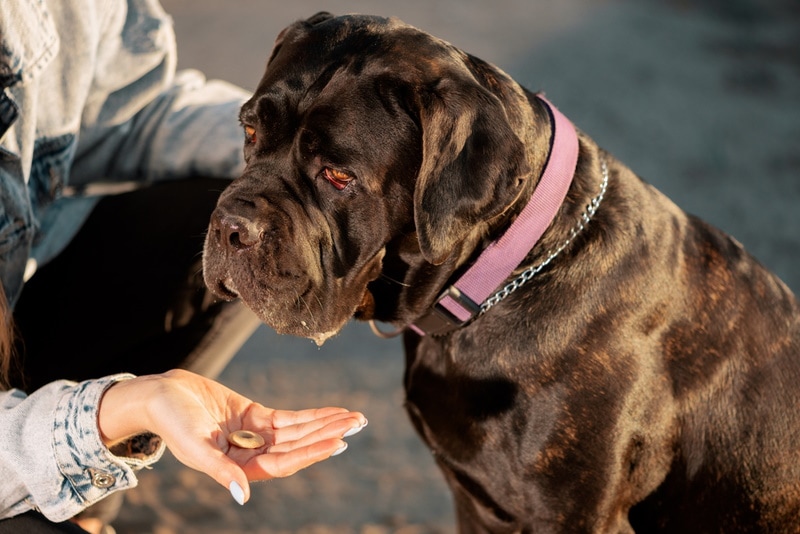
Wrapping Up
While the Mastiff has a notoriously stubborn streak, they’re also extremely loving and eager to please. With a bit of work and patience, we’re confident that you’ll be able to get all your Mastiff’s problem behaviors under control in no time and you’ll be able to move on to teaching them some pretty cool tricks!
Stick with it and keep it fun for both of you because, in the end, that’s the whole reason for having a Mastiff in the first place!
Featured Image Credit: Joseph Gruber, Shutterstock


